PASSION APO Spotting Scope—Compact Power & Exceptional Clarity
German Precision Optics’ Passion APO is a high-performance compact spotting scope designed and…
German Precision Optics’ Passion APO is a high-performance compact spotting scope designed and…
Mesa Tactical, well-known for its pro-grade tactical shotgun accessories, now bridges the gap…
North Kansas City’s TriStar Arms has introduced the APOC, a compact 4-inch-barrel, 9mm…
The Mod-Navy Qual I’ve been doing this qual (or drill, or whatever the current nom…
• Built for road trips and off-road use• Manual transmission equipped• Wrapped in MultiCam Arctic…
I designed the Button Man to give shooters a low-round-count, low-light-engagement drill that involved both…

It’s no secret that night vision technology provides an extreme advantage on the modern battlefield. Humans are not nocturnal by nature. We get more than 90% of our sensory information from our eyes. When it gets dark, our world gets very small, very fast. Therefore, it’s no wonder that we retreat inside, get tired, or seek out light sources at night. Humans, like the rest of the animal kingdom, are naturally afraid of the dark. Darkness severely hampers our sight, limiting our perception of the world around us. This is a major contributing factor to nighttime being the right time for the good guys to do bad things to the bad guys.

Using Night Optic Devices (NODs), we can amplify the much-reduced light that exists in the darkness into something resembling daytime. Image Intensification (I2) also sees outside the visible light spectrum (about 380-750nm), and into the infrared light spectrum (about 700nm-1400nm), greatly increasing the information presented to the user. All this added information adds up to darkness being an ally to night vision-equipped operators. But times are changing, and our enemies are no longer night blind.
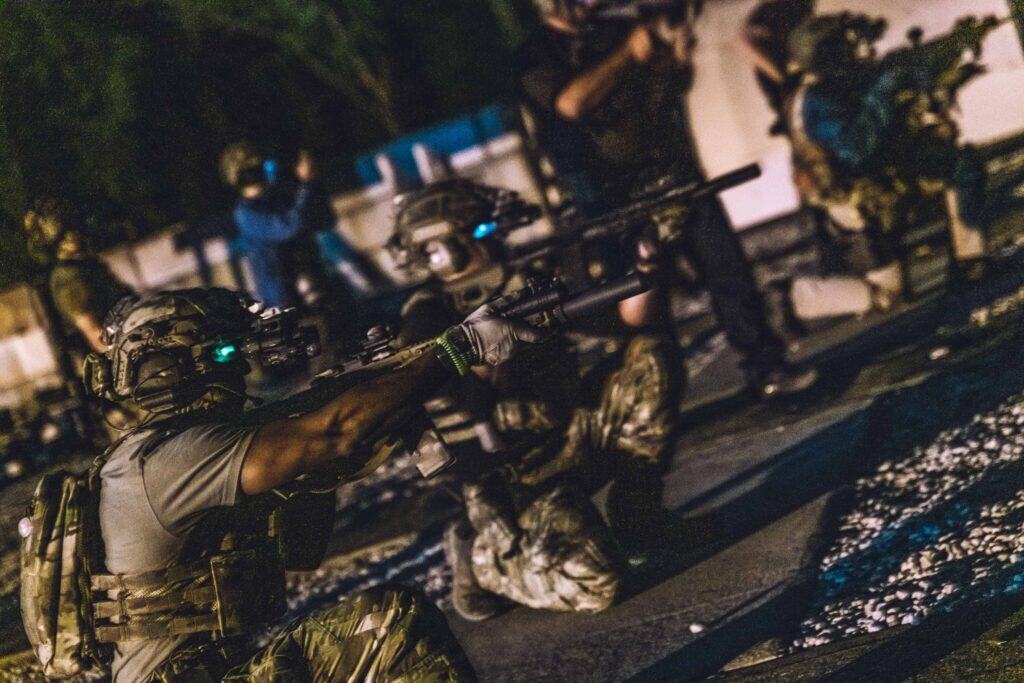
The first combat deployment of night vision was during World War II using what’s now considered “Gen0” technology. These Gen0 devices required an active infrared illuminator to produce a beam of IR light only seen through the night vision optic. The 1960s saw the fielding of the first Gen1 devices, known as “starlight scopes.”
They did not require any infrared illumination and could amplify ambient light from the moon, stars, or manufactured sources. But their utility was limited to short ranges and they lacked resolution. Gen2 made great leaps forward in capability in the 1980s. But it wasn’t until the 1990s and Gen3 image intensifier tubes came on scene that the technology really started making a difference. The beginning of the Global War on Terror saw the good guys go into battle with an unimaginable advantage over the dirt farmers who perpetrated the attacks on 9/11.
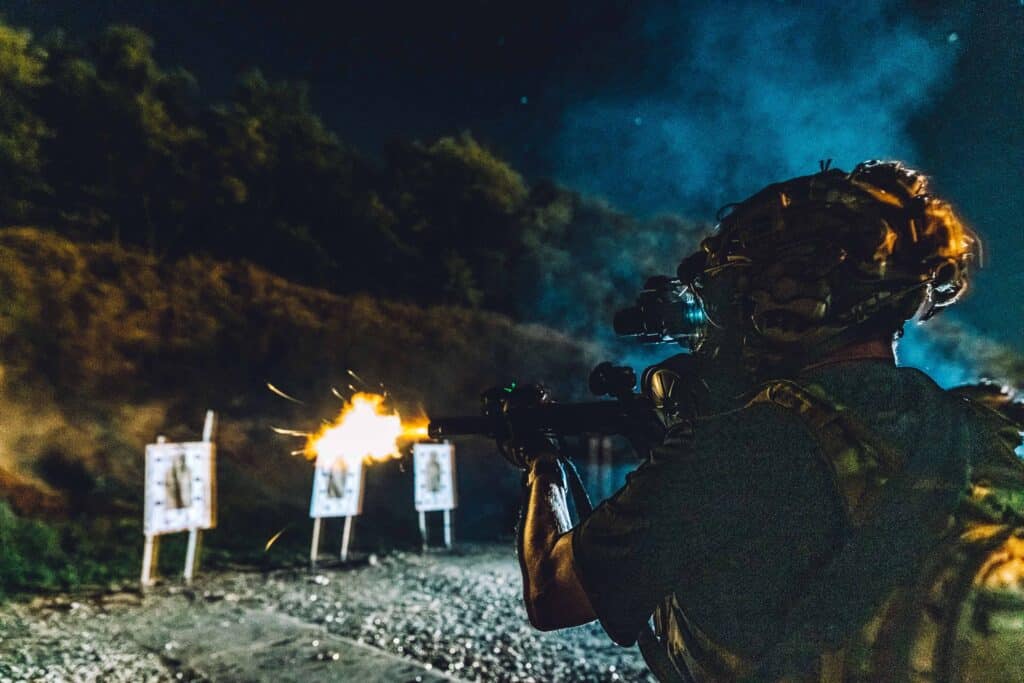
At no time in history has such an advanced fighting force gone to war against such an unprepared enemy. The Taliban and Al Qaeda fighters were crushed by B-52s during the day and routed at night by NODs-equipped special operators. But like most good things, it would not last forever. Early in the war, the bad guys figured out that we were able to see, target, and kill them in the dark.
They realized we had magic goggles that allowed us to move and fight with relative impunity around the clock. Unfortunately for them, the only technology they had for seeing in the dark was called a flashlight, which was easily seen by anyone with the naked eye. They soon began adapting to their disadvantage by walking around with camcorders equipped with night vision, giving them limited capability for movement. But the camera’s greatest advantage was that it “bloomed out” when hit by infrared lights and lasers—the primary weapon aiming tool for night-vision-equipped good guys.
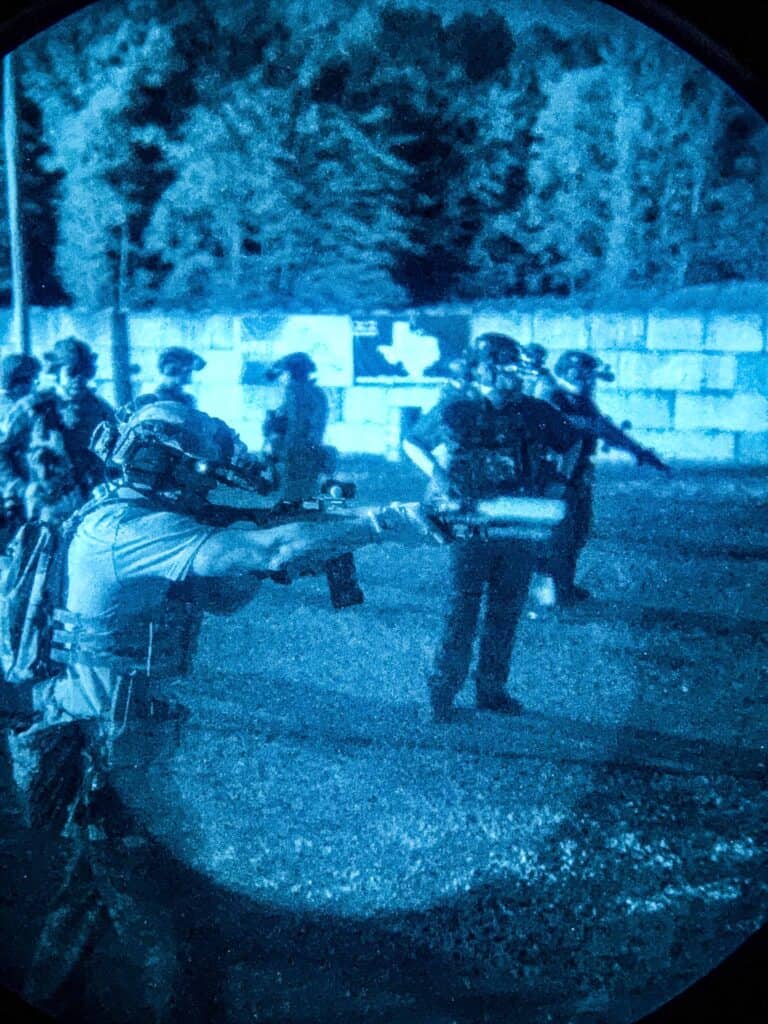
My good friend, Bill, is a retired Army officer. As a young fire support controller attached to SOF teams in 2002, he was overlooking a valley with from an OP with an A-Team. They saw a group of four people moving in the dark a few hundred yards on the valley floor through their night vision goggles. At that distance, and with limited ambient illumination, Bill could not establish Positive Identification (PID).
He called a loitering AC-130 gunship to “burn” the position with their massive IR illuminator from overhead. As soon as the invisible IR light hit the group, they started running. Since there were no friendly units in front of Bill’s position, he released the AC-130 to go weapons hot. Knowing the bad guys had no night vision capability, Bill’s team was perplexed as to how they knew they were being targeted. It wasn’t until they conducted the Bomb Damage Assessment (BDA) the following morning that they discovered a wrecked Sony Night Shot camcorder among the body parts. Bear in mind this was 2002.

As the war continued, bad guys acquired more and more means to see in the dark. Battlefield pickups, stolen equipment, and night vision brought in from China, Russia, Chechnya, and other places in the Axis of Evil began showing up and being used against the coalition forces. Viewing the first decade of war through NODs, you could see a beautiful display of infrared lasers lighting up the night like a scene out of Star Wars. But the back half would be different. As the enemy gained greater ability to see in the infrared light spectrum, the good guys needed to go passive.
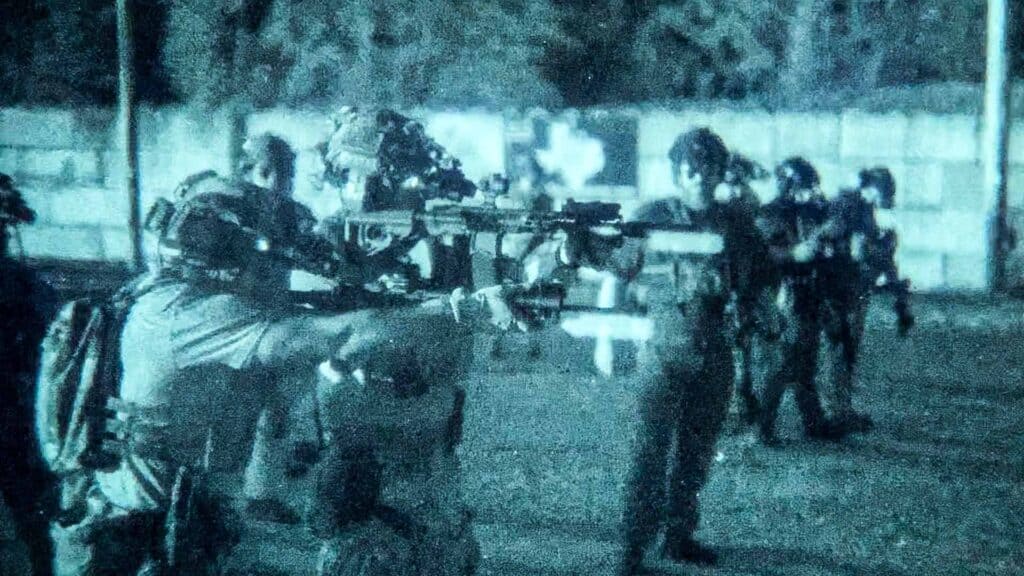
Passive night vision aiming is a method of targeting through NODs without producing an active infrared signature. This is traditionally done with a weapon-mounted night vision scope or Clip-On Night Vision Device (CNVD). But these options mean the user needs to heft his weapon just to see in the dark. A more practical method is to look through a weapon optic while wearing the night vision goggle on the head.

Infrared lasers are the traditional methods of aiming a weapon system under NODs. Most laser aiming modules will feature multiple outputs including IR Aiming Laser, Visible Aiming Laser, and IR Illuminator. The aiming lasers are self-explanatory, but for the public-school kids:
IR Aiming Lasers are can only be seen through NODs. Depending on the power of the laser and the output setting chosen by the user, they can appear as thin straight lines of energy emanating from the laser box itself. The emission point will generally have a “bloom” that looks like a ball of light. A similar bloom will appear at the impact point of the laser. Again, this is only observed through image intensification devices and is invisible to the naked eye.

The beam itself will be more or less visible through NODs depending on the amount of atmospheric particles in the air along with the aforementioned power outputs. Low-power IR lasers may not have a visible beam from emission to impact point, but the bloom effect at both ends will be seen. The beam divergence (think of it as how tightly focused the beam is) will often be somewhere between 2-6 MOA. However, it will usually appear larger due to the impact point bloom. IR Aiming Lasers will have both windage and elevation adjustments so the laser can be zeroed to the host weapon and ammunition.

Visible Aiming Lasers are very similar to their IR counterparts, but they are seen in the visible light spectrum with the naked eye. They have many of the same properties and will be either red or green.
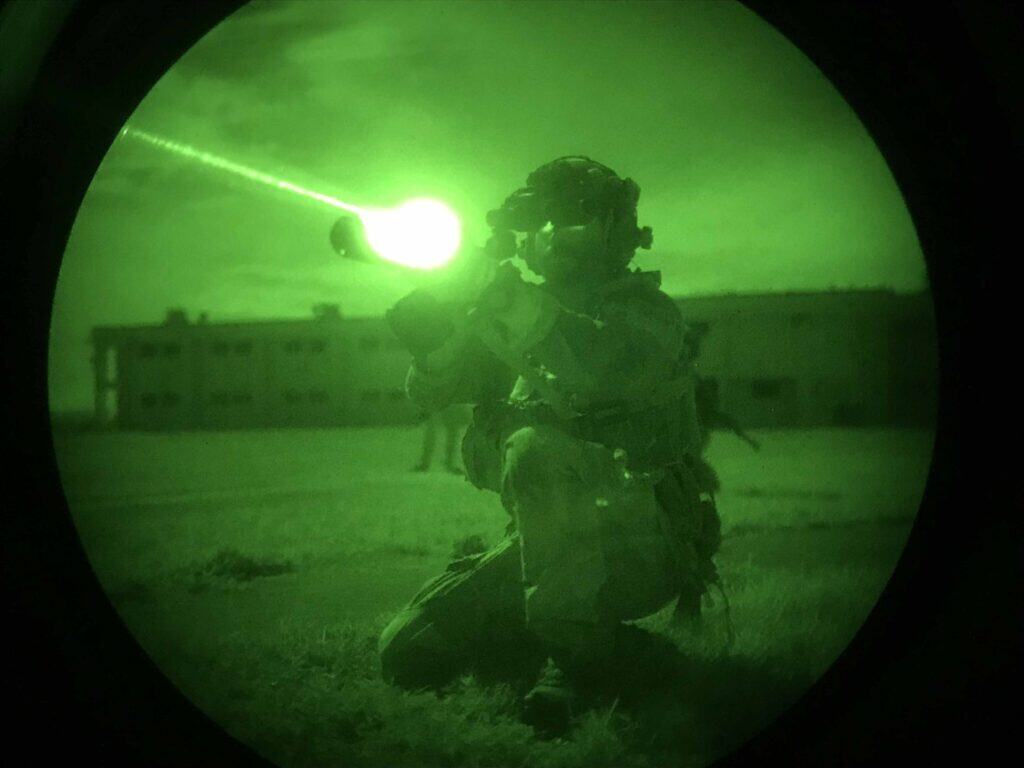
IR Illuminators are infrared flashlights. Like the aiming laser, it is only observed through night vision. But it will have a widely focusable beam. IR illuminators require much more power than aiming lasers due to the energy requirements of wide and narrow beams. They are designed to flood darker areas that may not be resolved with image intensification devices alone, with artificial IR light. At their widest, they produce a large beam designed for close-range illumination. At their narrowest, they can look like a lightsaber for thousands of yards.

The benefits of IR laser aiming are pretty obvious. Since no optic is required to aim, users simply turn on their zeroed IR laser, account for their laser offset, and play the video game. Guns outfitted with IR lasers do not even need to be shouldered. An experienced operator who understands his offset can literally make combat effective hits from the hip. They are also great communication tools between friendly ground, surface, and aerial assets. The same line of IR energy used for aiming can be dual-purposed as a pointer. Rather than attempting to explain something over the radio, you can point directly to it with the laser. Anyone with NODs will immediately see it.
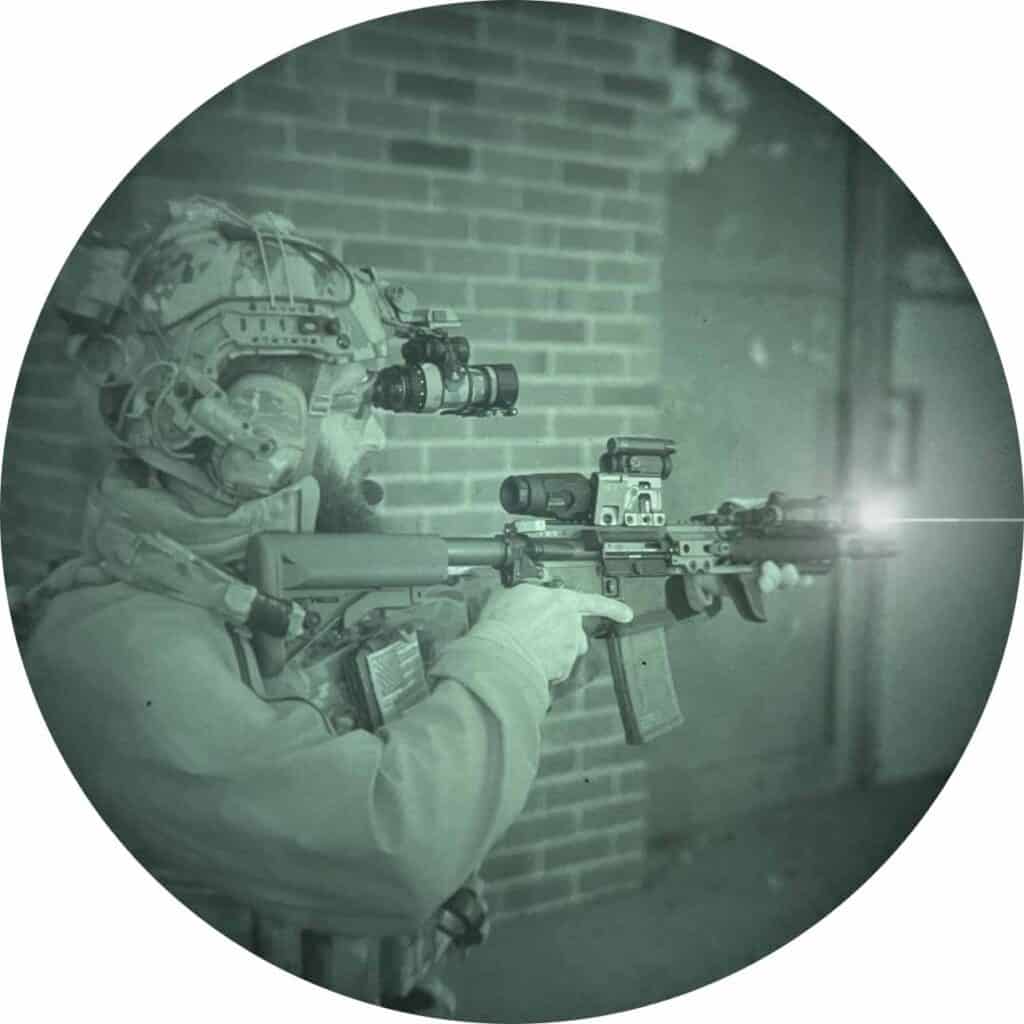
IR Illuminators can work in much the same way. The highly focused, high-output setting is often used to point things out to aerial platforms under goggles.

All of this technology is very fast. The lack of optic aiming requirement allows for a lot of shooting positions that may not be easily attainable given battlefield conditions. It was also easily embraced by the generation that fought the GWOT since they grew up on video games. But like everything, you need to give something to get something. It didn’t take long before the enemy adapted.
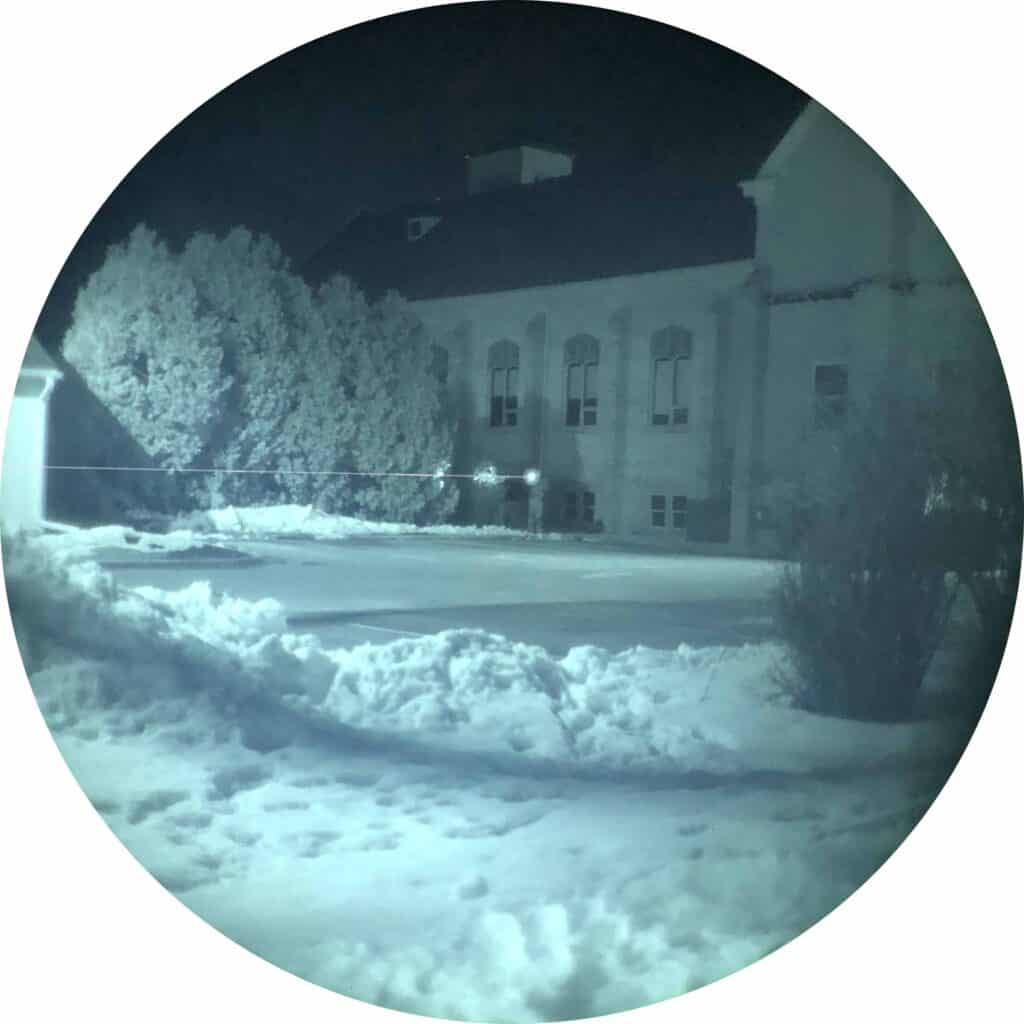
The most obvious and low-tech method employed to avoid getting shot in the pitch-black of night was to limit, or eliminate altogether, their activity at night. While this tactic might have saved a few bad guys from getting shot in the dark, the war machine eventually caught up with them. Just because the bad guys hunkered down at night didn’t mean the good guys weren’t on the move with their night vison.

The bad guys started experimenting with less conventional night vision devices—such as camcorders. While less than ideal compared to an AN/PVS-14, it gave them the ability to track IR light once thought invisible to them. And it wasn’t long before they started getting their hands on actual night vision goggles, some of them high-end battlefield pick-ups, some of them low-end Russian or Chinese units. Regardless, all of them could see in the IR light spectrum and identify IR lasers/illuminators. The dirt farmers were catching up.

Fast-forward to the present day, where the current administration left $81 billion worth of military hardware in the hands of the very Taliban terrorists we had been fighting for 20 years, including 16,000 sets of Gen3 night vision goggles and 45,000 AN/PEQ-15 lasers. Suddenly, the woefully outmatched enemy forces are near peer/peer fighting forces in terms of technology.
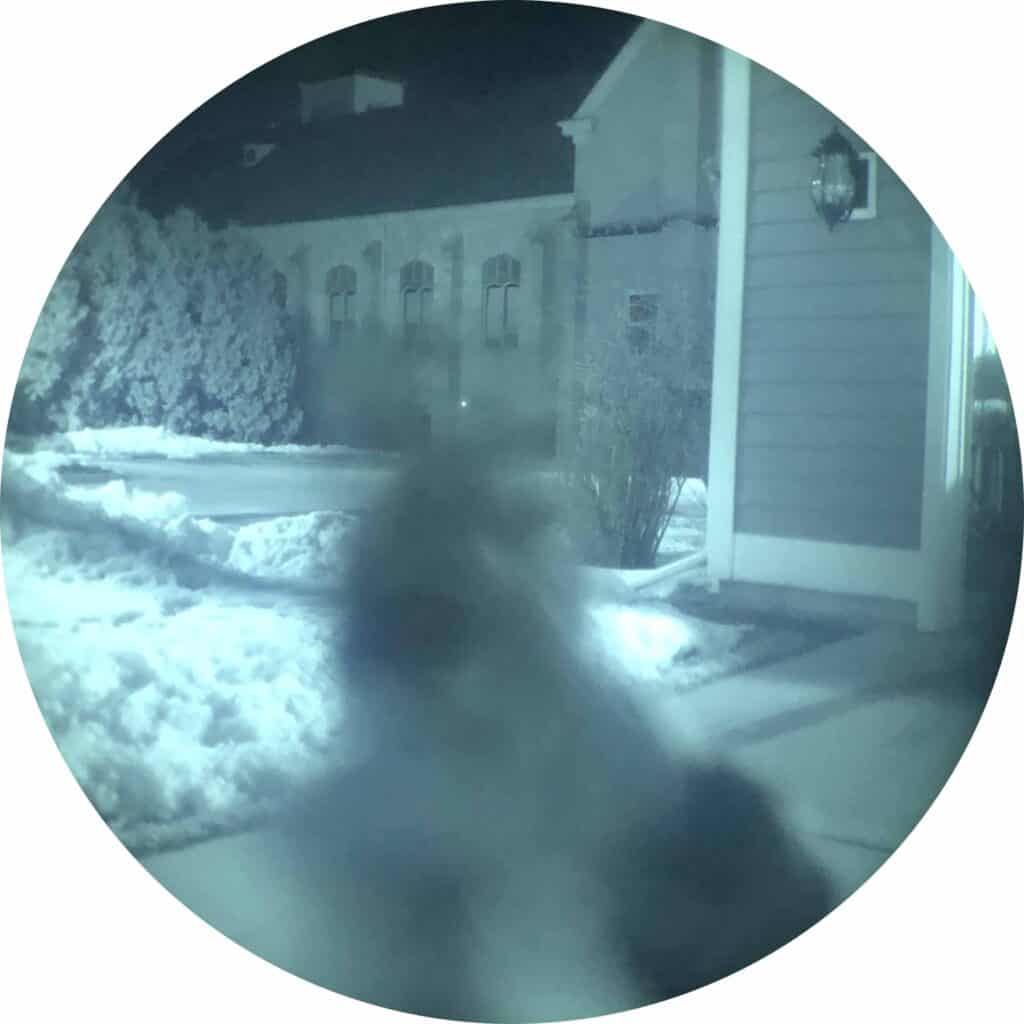
And when you consider that the Russians, Chinese, North Koreans, and other Arab nations already have such devices, the West is far from owning the night. Attempting to use IR lasers in current conflicts the same way we used them through the majority of the GWOT is liable to attract heavy fire from enemy forces who are able to see the same IR energy.
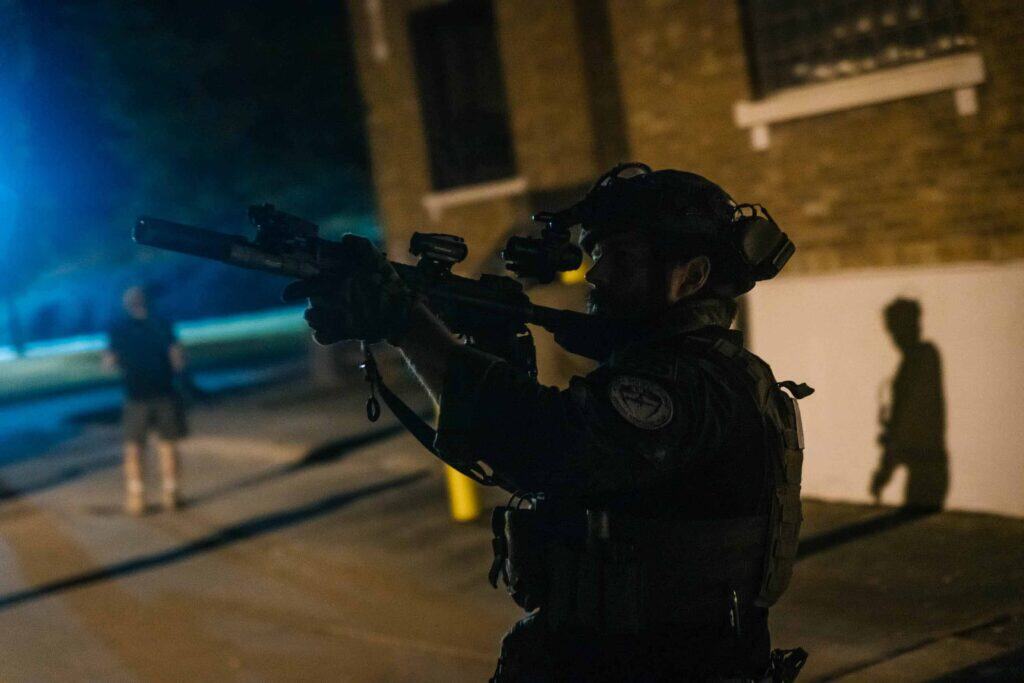
Enter passive night vision aiming. Over the past several years, SOCOM/JSOC units have sharply pivoted to passive aiming to counter the fact that adversaries have night vision too. Passive night vision aiming does not require the use of any active IR signature. The operator simply shoulders his weapon in a position that allows him to see through his weapon optic while observing through the head-borne night vision goggle. Not without its challenges, passive night vision aiming is the next evolution of night vision engagement on the modern battlefield. What was old is new again.
The early years of the GWOT saw a lot of first-time large-scale fielding of gear. M1913 Picatinny mounting platforms were still very new, IR lasers had only really been used by special operations forces, and there was no real night vision training program. It was not uncommon to see AN/PAQ-4 and AN/PEQ-2A lasers bolted to the plastic handguards of M4 and M-16 rifles. (You can probably imagine how stable that configuration was.) Indeed, the rail systems were not much better. While the early RIS from Knight’s Armament Co. was well-made, it was still held in place by spring tension from the delta ring. This meant that a zeroed laser may have been “minute of hadji” at 100 yards, but you wouldn’t want to rely on it to take a high-percentage shot. To do this, we relied on passive night vision aiming.
The challenge with passive night vision aiming was that absolute cowitness mounted red dot sights of the time required the removal of neck vertebrae if you wanted to get a helmet-mounted NOD behind it. The optic needed to be raised up. Luckily, we were already mounting our optics on top of our carry handles to clear our Peltor COMTAC headsets from impinging on our buttstocks anyway. The ability to passively aim through NODs was an unintended benefit. At the time, we weren’t concerned about signature reduction because our enemy had almost zero night vision capability. We were more concerned with having a stable aiming platform.
It wasn’t long before we realized passive night aiming was an all-around superior aiming method in terms of marksmanship. IR aiming lasers averaged about 0.5 mRad divergence. That would be a great pinpoint aiming tool if it simply terminated at 0.5 mRad at the impact point. But the extra energy needed to go somewhere, and that somewhere created a sizeable bloom on the target. The bloom would only get larger as we closed distance with the target.
And in many cases, the bloom wound up obscuring the entire center mass of a bad guy. This wasn’t ideal when we were looking to make lethal hits or not detonate an S-Vest he was wearing. But looking through a night vision compatible red dot optic was a different story.
Military-issued red dots have night vision settings that display the dot or reticle in the near-infrared spectrum. It appears almost or completely invisible to the naked eye but is completely visible through NODs. The 1 MOA center dot in an EOTech and the 2 MOA dot in an Aimpoint were pinpoint aiming devices for us.
Already very adept at engaging targets with these optics during the day, we dealt wholesale death with them at night. You didn’t have to hope the center of the laser bloom (accounting for offset at various ranges) was going to put a round through the bad guy’s heart and not his bowels. You could see where you were aiming!
As great as passive aiming was, it did come with some tradeoffs. Unlike active laser use, passive night vision engagement lacks communication capability. The goal is to not go shining IR lasers all over the place where anyone with NODs can see them. So, the easy laser pointing component is not as easy. Can you activate a laser if you really need to? Sure, but you better make sure the juice is worth the squeeze.
Passive night vision engagement also requires a tall mount for the weapon optic. Shorter absolute, lower 1/3, and even 1.93 mounts are much slower and more awkward to use. This is exacerbated while wearing tactical gear that further limits body positioning. And while tall mounts have certainly made a comeback in the SOF, LE, and civilian communities, they’re not for everyone. I have personally always liked taller mounts. As an operator, and now as an instructor, I’m wearing armor 99% of the time. Day or night, tall mounts just make things easier. But like any optic mount or laser, you need to understand your offset at various ranges.
Another benefit to passive night vision use is not as tangible as stealth in the face of an enemy wearing night vision goggles. As previously mentioned, active IR can be detected by other technology, including camcorders. Many cell phones will also see IR and near-IR. But if the cameras in these devices can see IR, does that mean other cameras can see it too? The short answer is yes. Here is where things get even trickier.
My ADT security cameras in the front and back of my home have a night vision mode. If I want to monitor their feed in real time, I simply open my ADT Pulse app. The night vision image I see is created from the camera using an active infrared LED illuminator and recording in IR mode (just like Gen0 night vision). And if it sees its own active infrared illuminator, it most definitely sees my weapon mounted IR laser. Food for thought if you’re planning an assault on a target that has cameras. If you think you’re reenacting the final scene of Zero Dark Thirty and trying to get all the elements into position with IR lasers, the bad guys have most likely known you were there for a while.
And it’s not just high-end security alarm cameras that see IR. Off-the-shelf DIY cameras and Ring doorbells see IR, too. Hell, Walmart trail cameras have night vision settings that utilize the same technology. In fact, these devices may be even more dangerous. When my Ring doorbell detects motion (including the sweep of an IR light), it sends me an instant notification on my cell phone!
Positional passive night vision shooting can be challenging. One of the aspects of wearing night vision that messes with people’s spatial awareness is the size of the goggle on the head. More to the point, our eyeballs are no longer on the front of our face while wearing NODs. They are, for all intents and purposes, 5 inches in front of our faces, at the end of the goggle’s objective lens.
This can cause some physical limitations when getting into various shooting positions. The optic pod(s) in a night vision goggle are perpendicular to your face, requiring that your eye(s) look forward in order to see though the tubes. Thus, the presence of the goggle requires that it is somewhat aligned behind the optic on the gun in order to see through it. And when you take into consideration that shooting positions in actual combat are far from the clean “standing, kneeling, prone” on square ranges, it’s easy to see the challenges. Here again, a tall optic mount will help. But it will not completely solve the problem.
All things considered, the advantages of no active IR signature and more pinpoint accuracy make passive night vision aiming a superior technique… for some things. But we all know there are no absolutes in combat. The benefits of passive night vision aiming are myriad for outdoor and ranged engagements. But image intensification requires the presence of some ambient light to amplify.
Extreme dark conditions will sometimes negate the use of passive aiming simply because you may need supplemental IR illumination. Also, it’s not always the fastest aiming method for close engagements. I much prefer passive aiming outdoors when I’m trying to preserve stealth. But CQB is often without cover and concealment. At that point, the enemy seeing my laser with their NODs is the least of my concerns.
I am not saying that lasers are on a downtrend. They are still one of the best all-around devices for night vision operations and should be on every weapon system employed by professional teams. But we also don’t want to train for the last war we fought. Our enemies today—tonight—are highly motivated and better equipped than ever.
They possess near-peer and peer-level technology that forces us to adapt our tactics, techniques, and procedures. Until out-of-band SWIR technology is more widely fielded by the DoD, passive night vision aiming is going to play a much larger part on the battlefield. Images by the author and Basecamp Creative Group
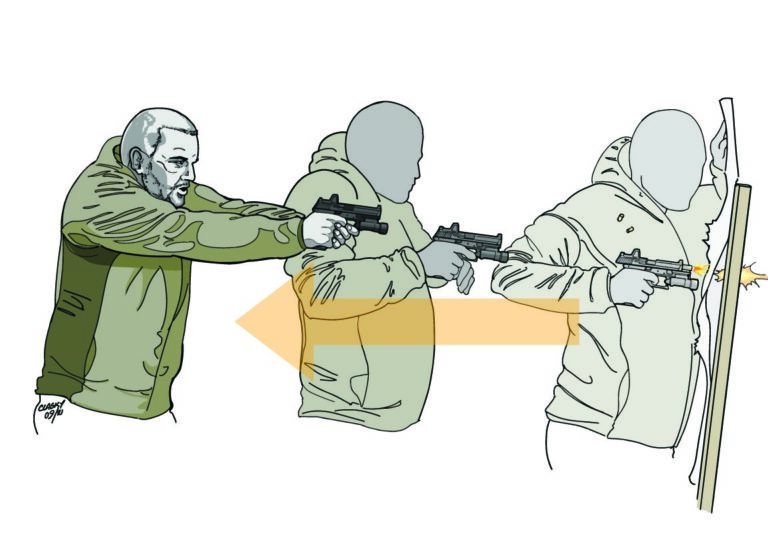
The skill of firing accurate rounds into a threat from retention is an underappreciated and under-practiced skill. Shooting from retention at close ranges can help ensure a threat…
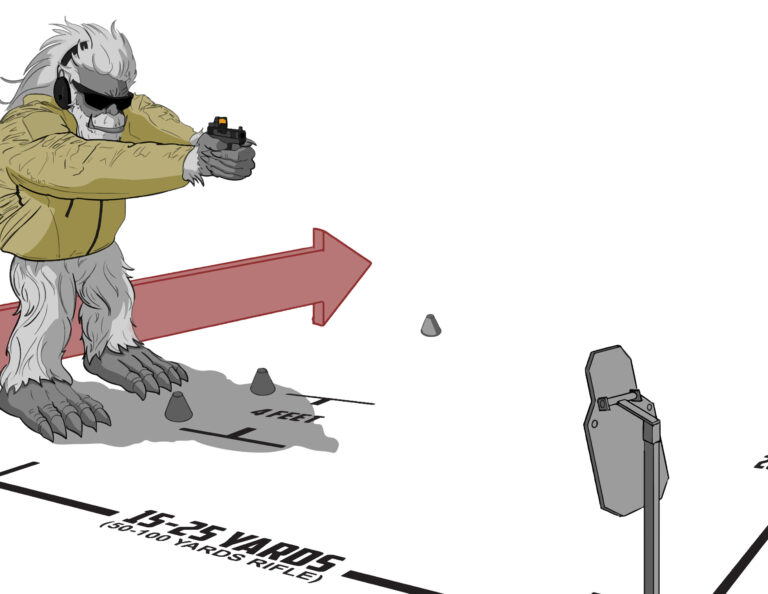
As with everything else in life, doing anything well boils down to getting the fundamentals down pat. This includes shooting. Your shooting stance, grip on the weapon, trigger…

Text by Jared RestonIllustrations by Charles Lasky One of the core tenets of Reston Group has been to combine tactical training with the information gained from competition and…

• Customized F-150 and motorcycle • Built as a platform to draw attention to PTSD • Driving/riding from Washington to Virginia to support ptsdfoundation.org The F-150 you see…
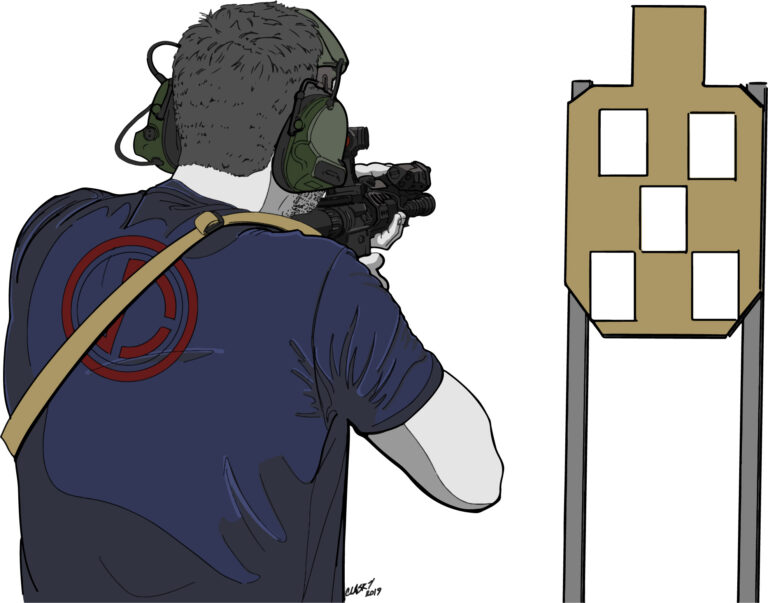
As an avid student and teacher, I use drills and exercises to isolate skills. Drills are not scenarios. They should be viewed as an exercise. Like going to…
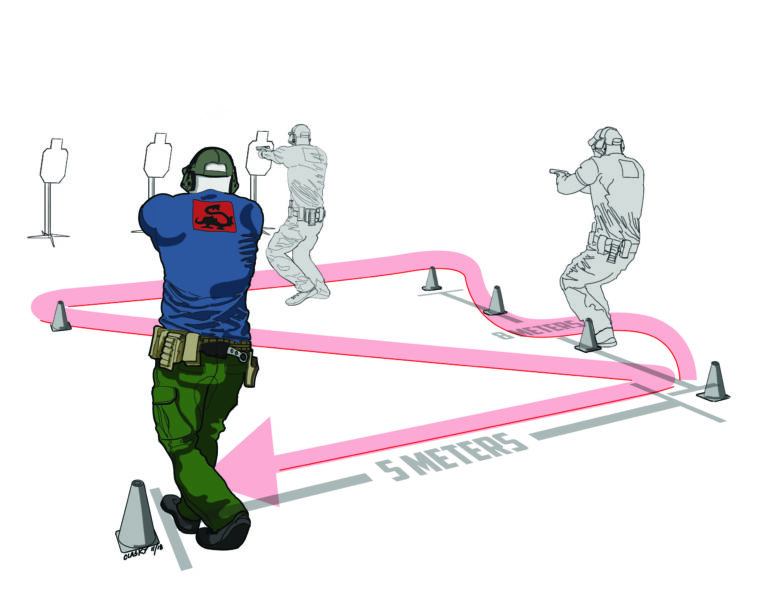
In the teachings of the Martial Arts, there must be a close synchronization between closing and opening distance and the various actions of the hands and feet. The…
© 2025 UN12 Magazine
© 2025 UN12 Magazine
Wait! Don’t forget to